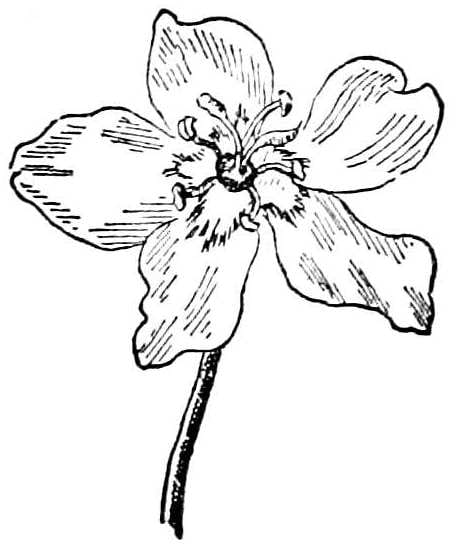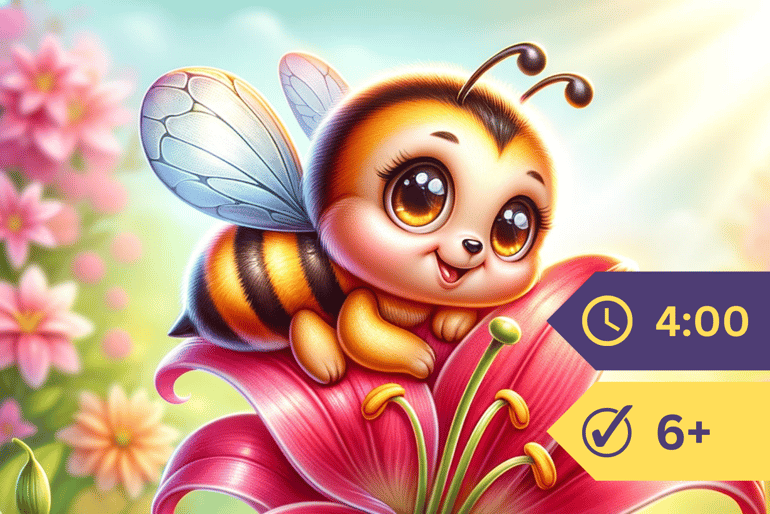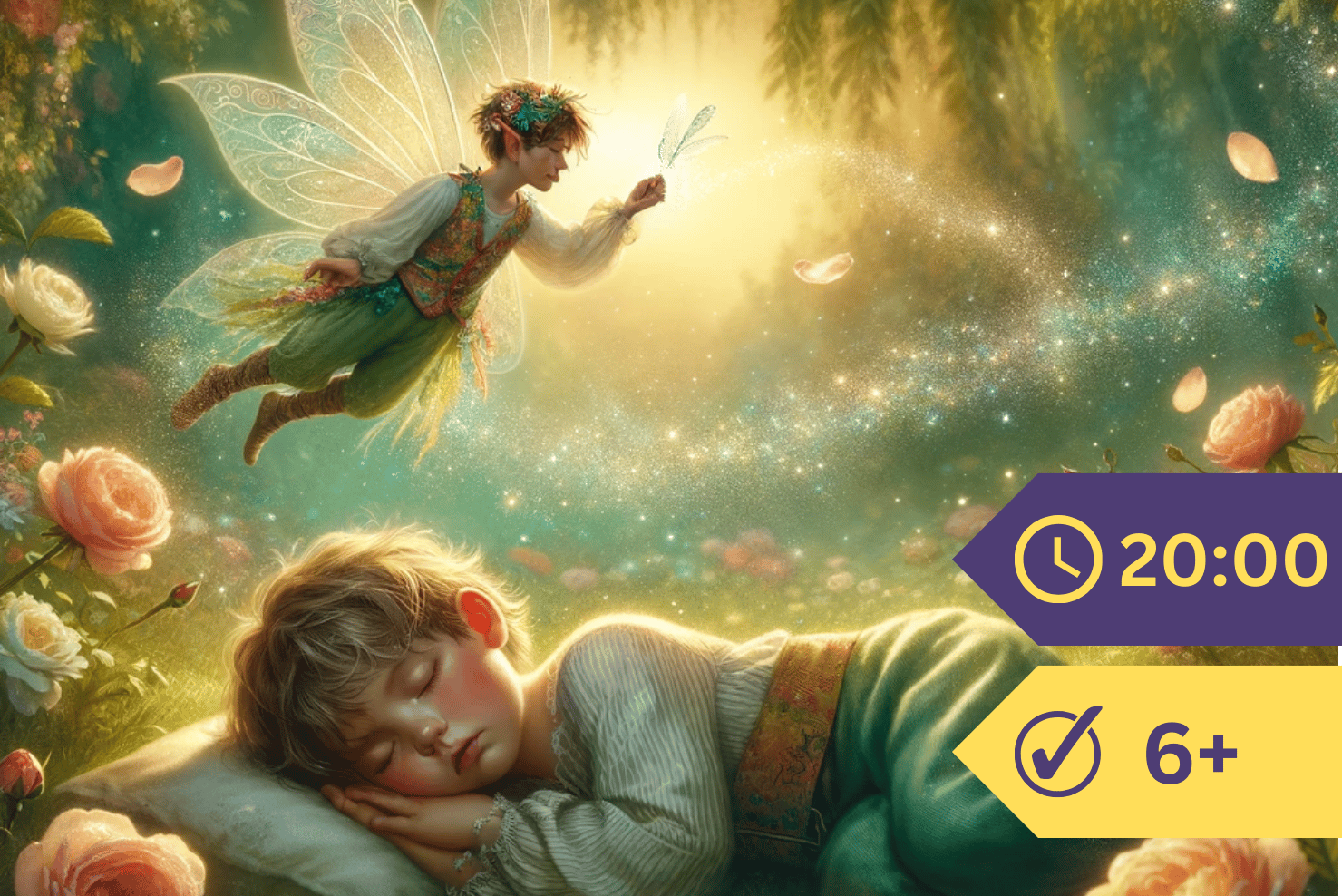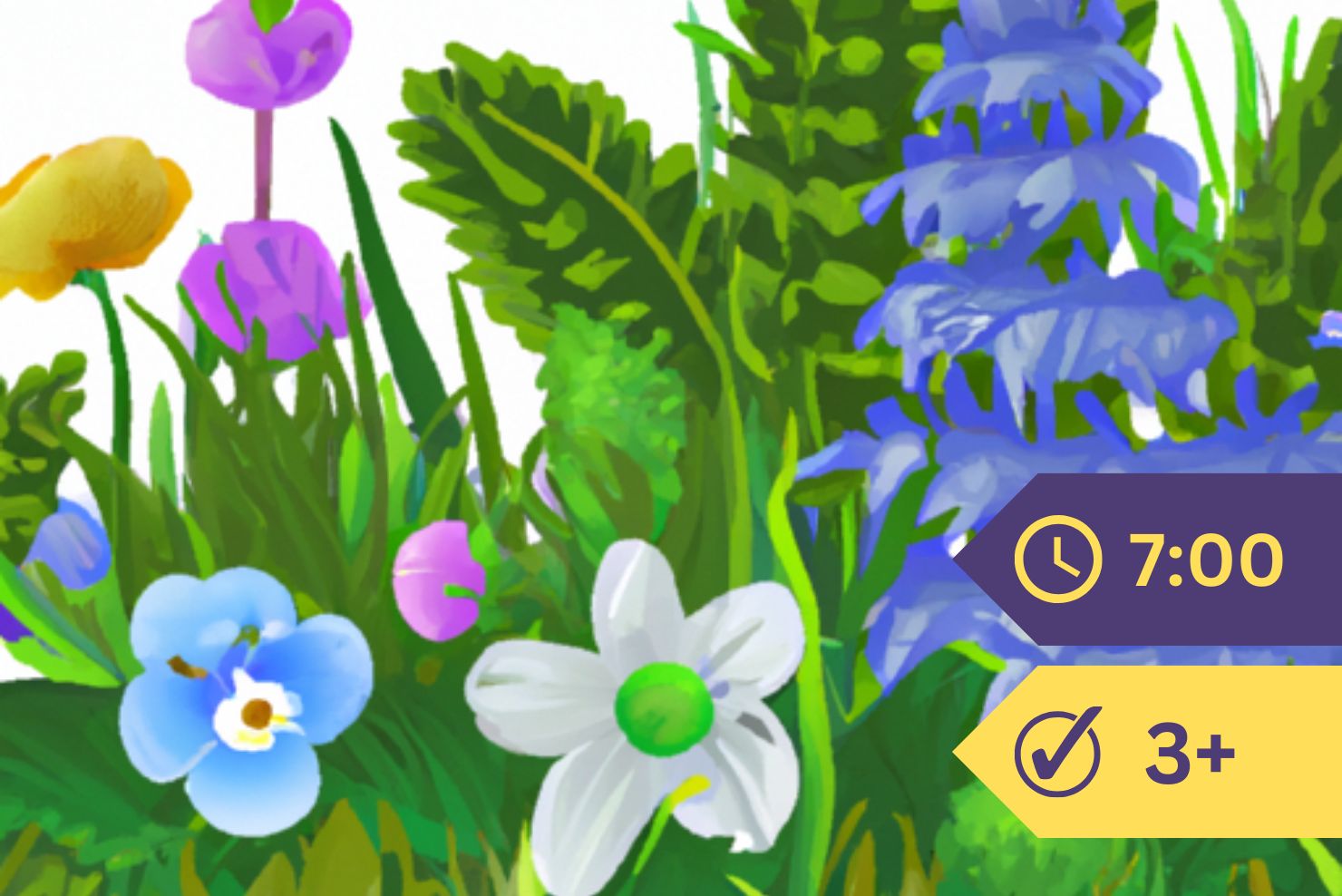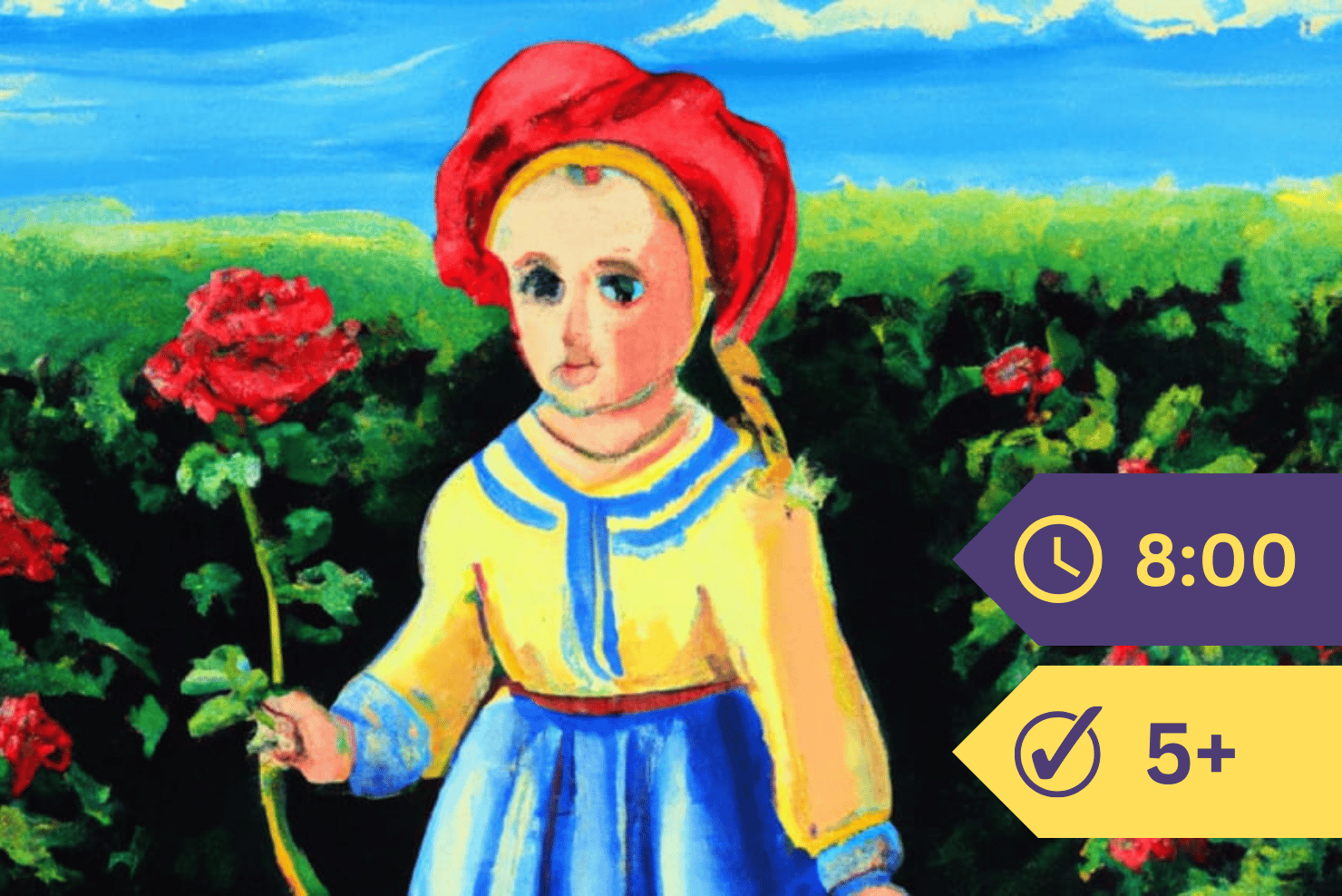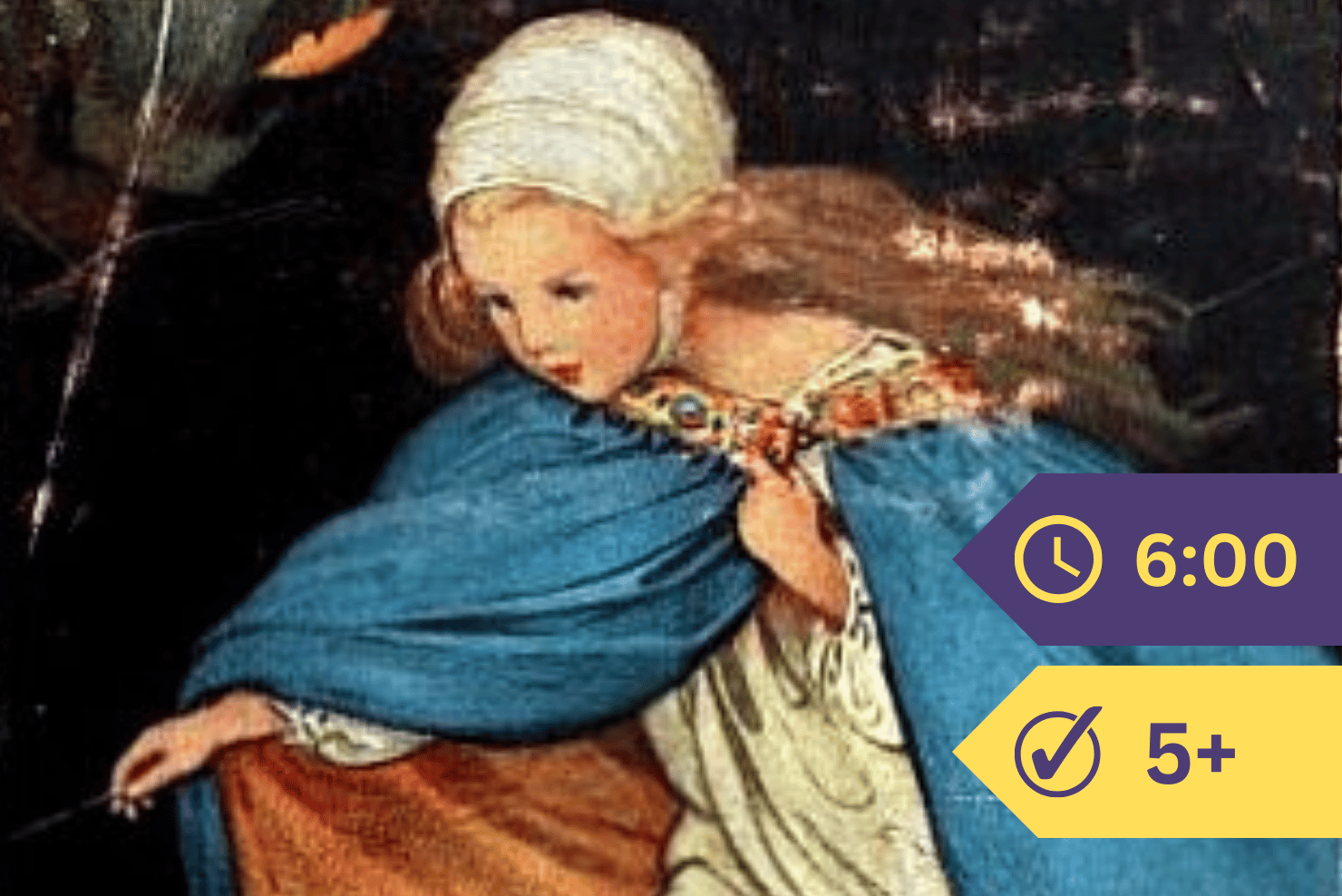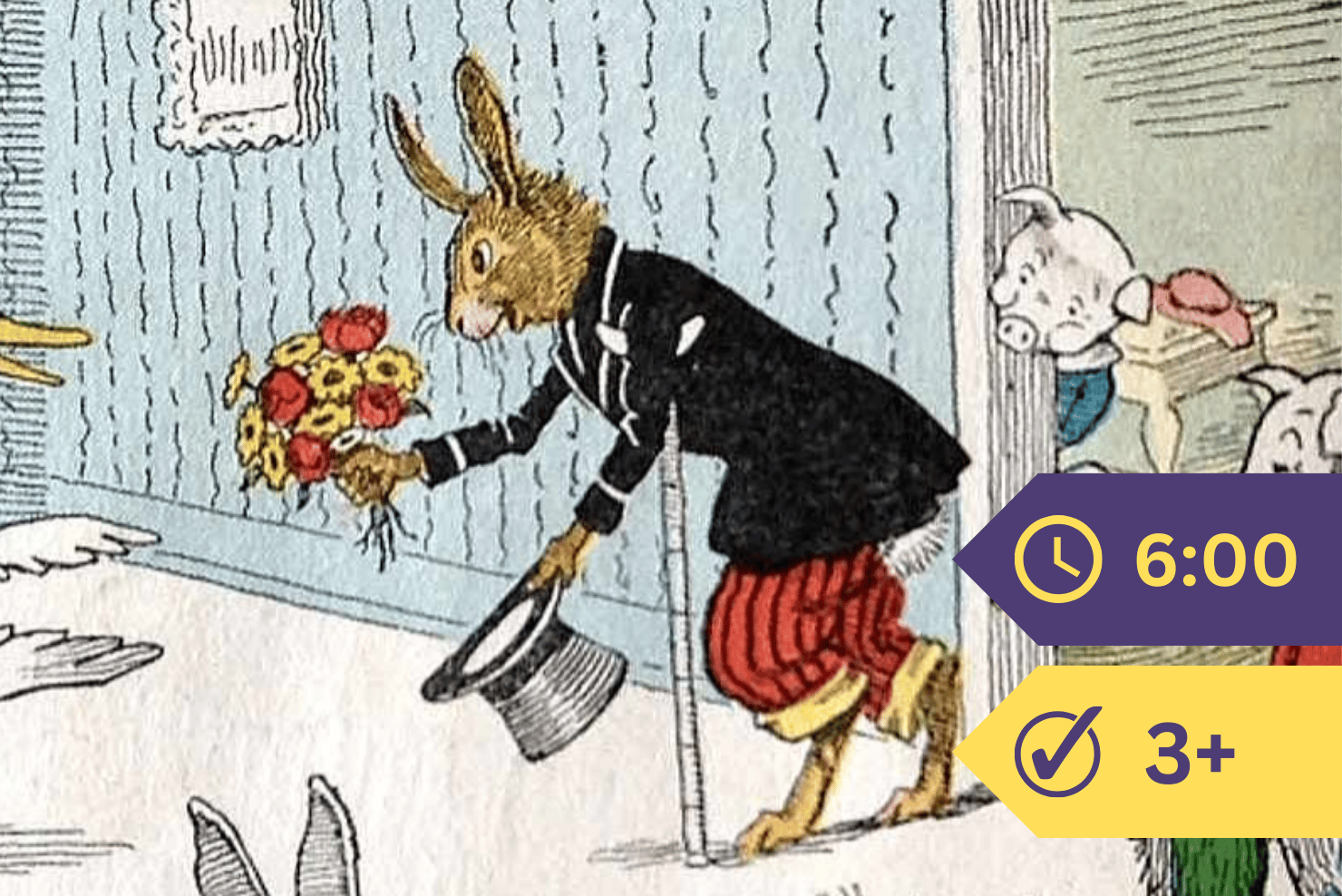On this page you see a picture of the garden foxglove.
The garden foxglove is an English wild flower. It is so striking and beautiful that it was brought across the sea to decorate our gardens.
We can guess that the spots within each bell are the signposts leading to the refreshment room.
The yellow false foxglove, which grows wild in our woods in midsummer, is a less brilliant flower than its English cousin, and is without the spots that serve as signposts.
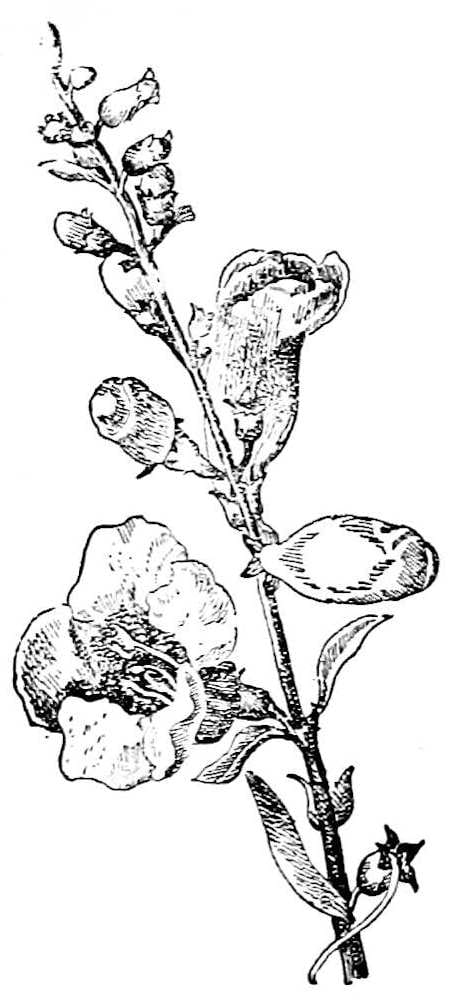
Our wood and meadow lilies are well fitted to secure bee visitors. Their colors are brilliant enough to catch the eye of the most unobserving of bees in its voyage across the meadow, and their spots vivid enough to lead it at once to the refreshment room.

Try for yourselves to follow these markings with your tongue, and you will win the bee’s reward, a sweet drop of nectar.
Whenever you see a flower with such vivid markings as these, it will be worth your while to play the bee, and start a honey hunt.
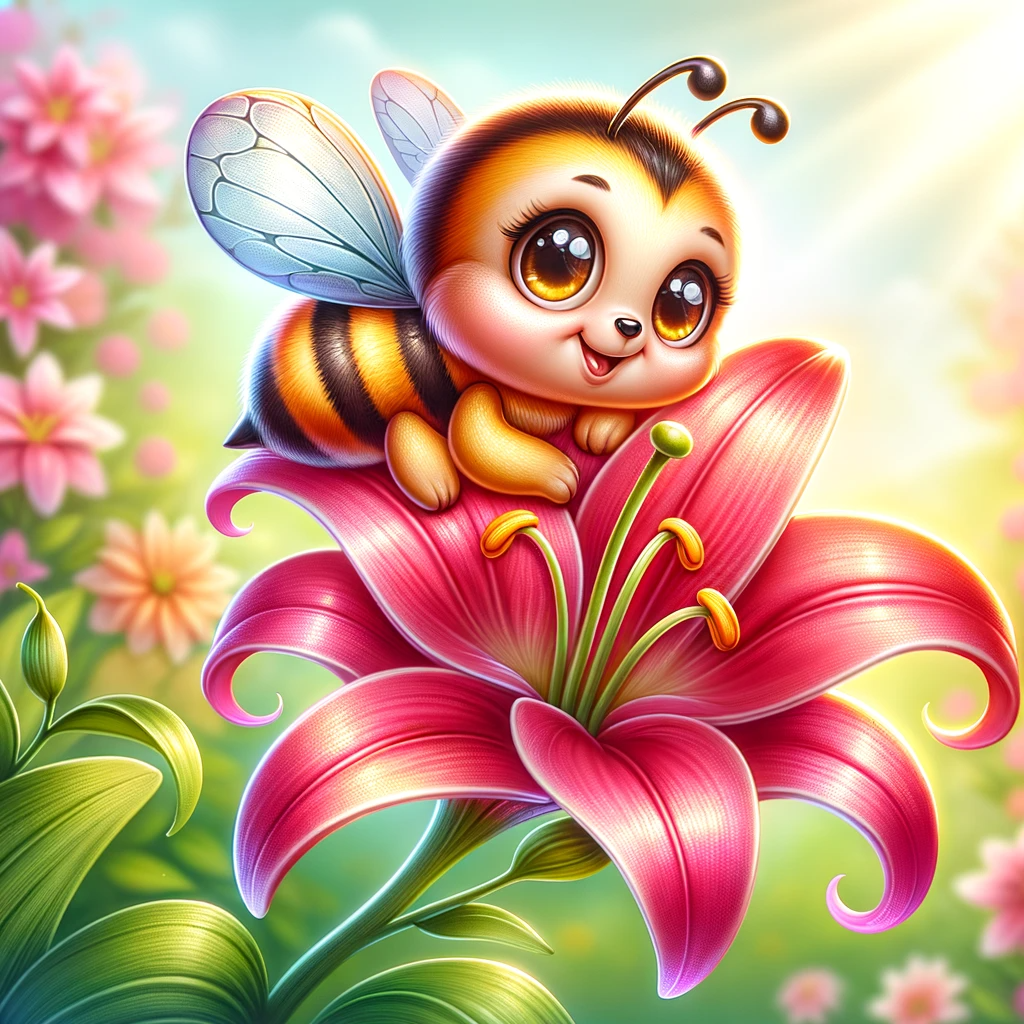
Sometimes the sweet drop lies at the base of the flower leaves, as in the lilies; sometimes in a pocket, as in many of the orchids; sometimes it is in the bottom of a long spur such as you see in the columbine, violet, and nasturtium.

The picture below shows you the beautiful flowers of the mountain laurel.
These flowers play a clever trick on their bee visitors. They wish to make perfectly sure that their pollen will be carried from one blossom to another, and so they set a little trap.

In a freshly opened blossom each stamen is bent over, as you see they are bent over in the picture.
Their dust boxes are caught in little pockets of the flower cup. When a bee lights on a flower, the jar causes the dust boxes to spring from the pockets with so much violence that the pollen is shaken over the body of the visiting bee, which is sure to leave some of it on the pistil of the next flower.

Some flowers take special care to prevent their pistils from being dusted with pollen from the dust boxes of the same blossom. The fireweed bears such blossoms as these.

In the picture above you see that the stamens of the fireweed are large and ripe, and ready to shed their pollen; but the pistil is bent sideways, pushing its closed tip quite out of the corolla, and out of reach of any pollen from a neighboring stamen.

The next picture shows you another blossom from this same plant. The stamens have shed their pollen, and are quite dry and withered; but its pistil has straightened itself, and spreads out its four tips so as to receive the pollen from another flower.
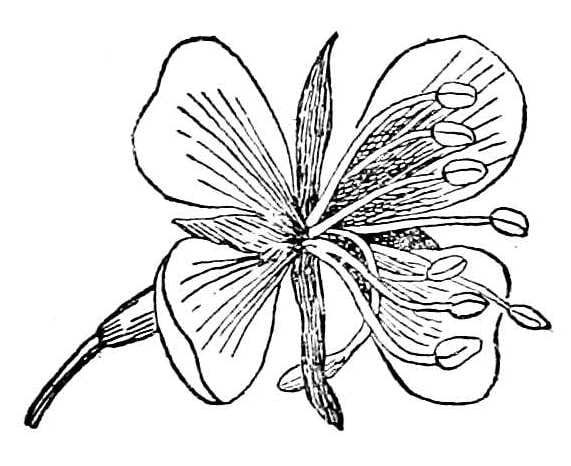

It is believed that those seeds which are touched with life by pollen from another flower are more likely to change into healthy, hardy plants than those which are quickened by the pollen of their own flower.
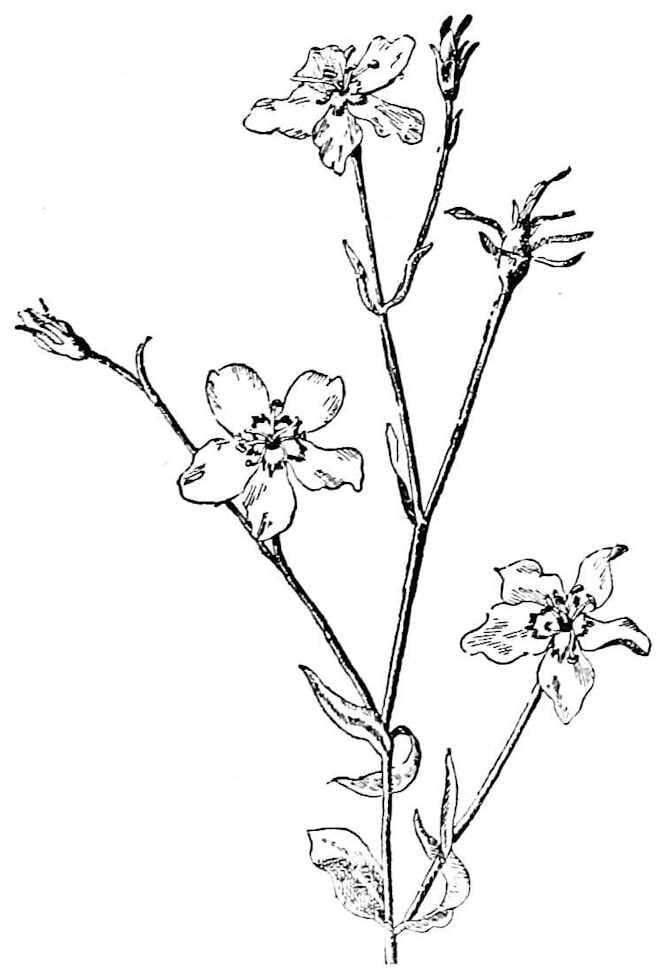
Such of you as live near the sea know the lovely sea pinks, which make a rosy carpet across the salt meadows early in August. The stamens and pistils of this sea pink act in the same way.
